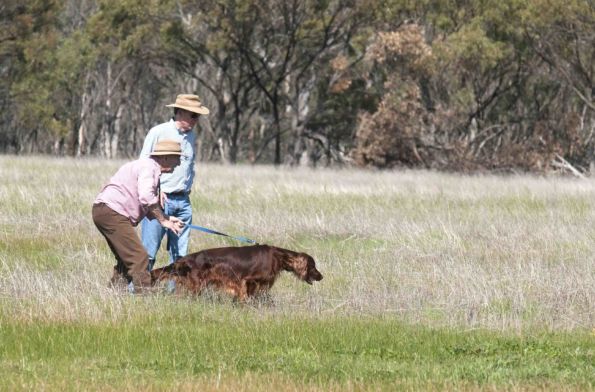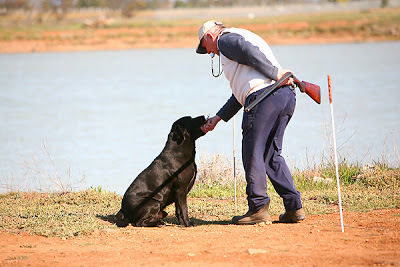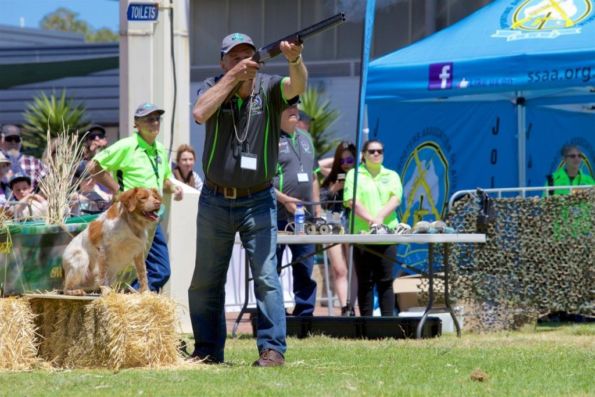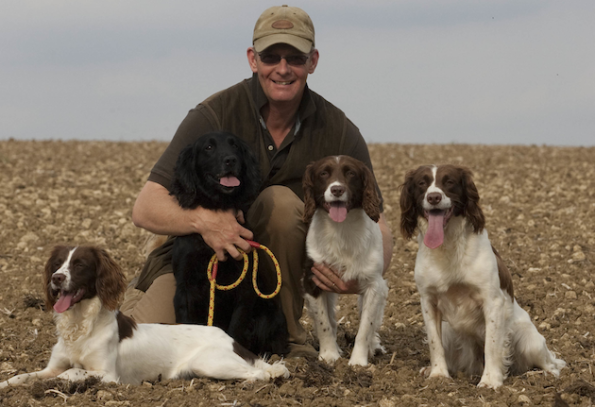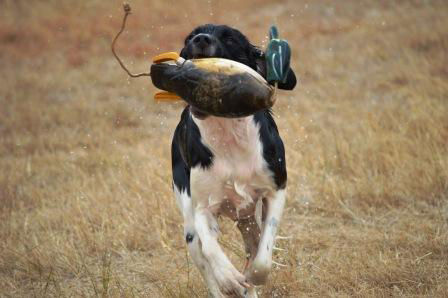Working Gundogs
The SSAA’s gundog discipline was established to promote the use of trained gundogs in the field. Responsible hunters ensure that game is quickly dispatched and retrieved, and the gundog has been fulfilling this role for centuries. However, all gundogs require training, and the Working Gundog Association of Australia (WGAA) is committed to providing gundog owners with training opportunities. In order to provide a yardstick whereby a gundog’s skills are measured, field and retrieving trials are conducted by WGAA in order to provide owners with a guide as to the abilities of their own dogs, and an indication of the ability of various blood lines. The SSAA provides a system of titles recognizing excellence in the traditional gundog tasks, and these awards are keenly sought after by handlers. All dogs competing in WGAA activities are registered on the WGAA data base.
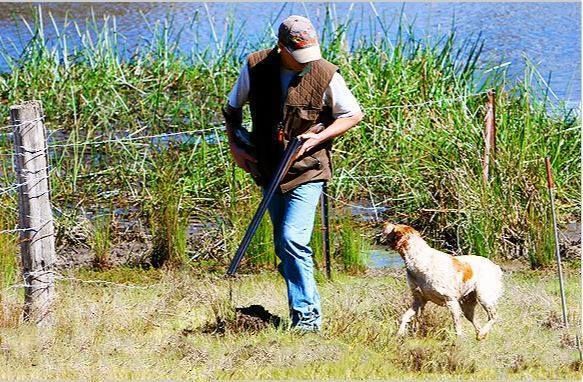
WGAA Aims
• To promote and encourage the working heritage of all breeds of gundogs.
• To promote hunting with trained gundogs in the field.
• To promote the use of gundogs in a proper game management context with particular emphasis on the utilisation of gundogs in the conservation of game.
• To promote and encourage ethical and sportsmanlike behaviour in all matters pertaining to the ownership, breeding, trailing, judging, training and use of gundogs.
• To establish and maintain a register of purebred working gundogs.
• To make awards and issue certificates which recognise excellence in the field.
• To conduct events such as trials, training activities and seminars, this will facilitate and enhance all of the above.
• To promote the ethical hunting of game.
• To assist in the retention of members’ shooting rights.
• To provide competitive and training opportunities for other associate gundogs with a view to encouraging the owners of associate gundogs to become owners of purebred working gundogs.
Training
Owning a well-trained gundog doesn’t just happen by chance; an intensive training program is normally undertaken from the puppy stage, often with the help of a club.
Working Gundogs is committed to providing training for its members and regularly conducts training days and other events to improve dogs for hunting and retrieving in the field.
The dog’s skills are also honed for trials. The discipline is structured to facilitate all levels of dogs, from young beginners to mature champions, and is fortunate to have some of Australia’s leading trainers and handlers as instructors.
Subdisciplines
Currently WGAA
conducts activities the 4 major gundog subdisciplines:
Retrieving
The Retrieving discipline encourages handlers to work closely with their dogs to ensure the dog will retrieve game on command. The dogs are trained to be steady to the shot and to the fall of game. All of the popular retrieving dogs are showcased in this discipline including the Labrador, golden retriever, German shorthaired pointer, Weimaraner, Munsterlander, Wirehaired Pointer, Epagneul Breton/Brittany, Vizsla and English Springer Spaniel.
However, don’t be surprised to see any well-trained gundog breed do very well in this discipline. As is the case with all gundog trial activities, retrieving trials are designed to cater for all levels of ability. As a dog gains more experience, the trial formats become more difficult. Retrieving trials are a popular gundog activity. Trial formats are designed so that novice dogs are expected to carry out easier retrieves, while experienced dogs are expected to be able to complete more testing runs. Retrieving is a basic requirement of gundog work and retrieving trials over both land and water are designed to assess and improve a dog’s abilities in this area.
Hunt, Point and Retrieve
The Hunt, Point and Retrieve (HPR) discipline caters for utility gundogs. Dogs in this discipline are expected to be versatile, and it is this fact that has led to their enormous popularity. Go to any duck swamp, rabbit patch or quail paddock and the odds are that you will see an HPR dog at work.
Dogs seen in this discipline include the German shorthaired pointer, Brittany, Vizsla, Munsterlander, wirehaired pointer and Weimaraner.
The aim of HPR field trials are, under conditions similar to a normal day’s hunting, to test handlers and their dogs in competition against each other in order to determine the dog that best fulfils the role of an HPR gundog on the day of the trial. Some of the dogs that perform creditably in HPR events will often bob up and do well in retrieving.
Spaniel
The working English springer spaniel is the most common spaniel breed used in the field in Australia. Springers are trained to be steady to shot and game, and are required to retrieve shot game on command. These little dogs are generally full of enthusiasm and are a pleasure to watch.
Spaniel field trials are all action, with the trial being conducted under conditions that reflect a normal day’s shooting. Hunting within range of the handler, the spaniel’s job is to find and flush game. The competing spaniel is expected to retrieve shot game for its handler. Spaniel trials are normally conducted on rabbits.
Before a spaniel can be awarded a field trial title, it must successfully complete a water test to demonstrate that it will swim and retrieve from water.
Pointer and Setter
Dogs seen in this discipline include the pointer, Irish setter, English setter, Gordon setter and Irish red and white setter.
The Pointer and Setter discipline includes dogs that have been bred for the task of working with speed and style in the quest for game birds. In Australia, they excel in the pointing of our great game bird, the stubble quail. The dogs are expected to work under their handler’s instructions, to be steady to wing and shot, to back another dog on point and to retrieve or point shot game. Dogs may work at a distance from their handlers, but are expected to be under control at all times.
The purpose of Pointer and Setter field trials is to find the best hunting dog in terms of the criteria that are seen in the class bird dog - finding ability, style, bidability and application to its task.

